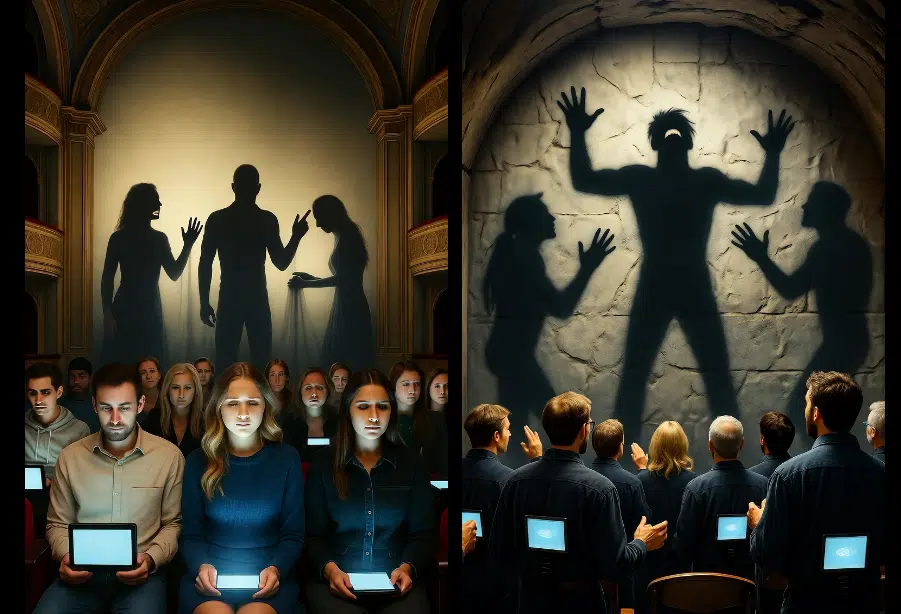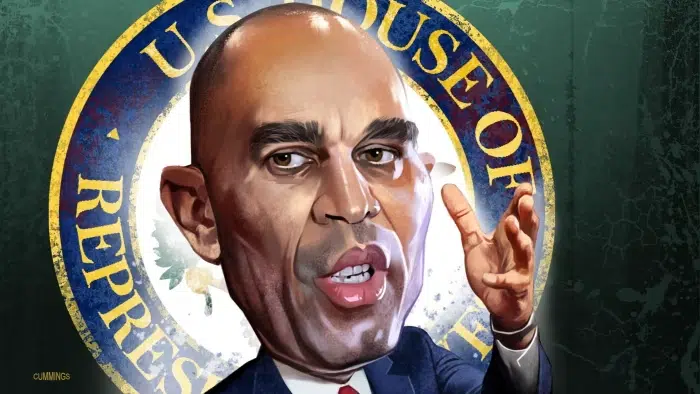
Pixels, Psyops, & Digital Prisons—And the Sacramental Cure
Grief has become a currency in America, across much of the world. Fear is a tool. Rage is the lever that bends societies.
It’s all so emotional, embarrassing at times.
We learned this in the aftermath of 9-11, and we’ve learned it again in the past several weeks, as specific images have become not merely tragedies but signal events, orchestrated–intentionally or not–to cull and channel our emotions, to organize our outrage, and ultimately to shape our collective consent toward things we would never dream otherwise. The pattern is familiar: trauma becomes narrative, narrative becomes policy, and policy becomes obedience. We are trained to react, not to reflect.
And when we calm down and realize what they’ve done to us–yet again–we can either admit it and grow, or we can double down on the “feels” we had even though logic (and God) is pointing in another direction.
Which so many do. Which deepens the schizophrenia. Which entrenches the mass psychosis.
Which makes our enemy laugh with delight. Stupid cattle.
In the weeks following two highly circulated images of death, every layer of American life–from government announcements to social media mobs–participated in the same machinery that turned 9-11 into a justification for the Patriot Act, warrantless surveillance, perpetual wars, and trusting Bibi Netanyahu with anything he said. Both left and right leveraged the event, each seeking advantage, while the average citizen’s grief was collected, quantified, and curated for political, economic, and social gain. Look closely at the last 24 years: the outrage was packaged–>the grief was curated–>the anger was assigned. And most of us nodded along as if we were in a theater, applauding cues written for us long before the curtain even opened.
The same thing just happened over the last month, and an alarmingly few in number recognized it.
If the so-what shrug at the release of the JFK files put a permanent dent in my previous hopes at a great awakening minus divine intervention, then the never-changing habit of us swearing “this time the electronic screens most certainly have our best interest at heart,” illustrated so plainly in the last several weeks, has crushed the side in. Americans are irrevocably stuck to their screens, and tragically, will turn to them for truth until that divine intervention takes place. I’m beyond convinced of that.
The entire point of me starting this crusade three years ago was for those children anyway. And now our fearless leader is thumbing his nose up at the very idea? And the side who is supposed to care just goes right along with it?
So as always I’m raising my hand today more than pointing the finger.
This is not just a story about politics. It’s a story about perception–about Reality, capital R. As I explored back on September 22, modern trauma is a vector for memetic energy–the viral spread of ideas, emotions, and loyalties that bend reality itself. Social media amplifies it, algorithms accelerate it, and every post, every headline, every outrage clip, acts as both trigger and mirror. The mirror is shattered, but we keep looking anyway. We are both the audience and the actors, applauding our own manipulation while imagining we are red-pilled and awake just because we’re pro-life or argue for the low-hanging fruit of boys in boys bathrooms.
Two recorded deaths in recent weeks, almost two months now, among the countless others not recorded across planet Earth, became an instrument for controlling the conversation, just as 9-11 did. These are levers to control policy, to control our minds, to control our wills, but we’d rather swim in our emotions. Netanyahu, domestic actors, the GOP, and even elements within the Trump administration all play their roles, consciously or unconsciously. The emotional culling of trauma does not care for our good intentions and prayers, and it certainly doesn’t care that nothing about any of the “evidence” released ever adds up in the least. All it cares for is effect, the aftermath, our feelings that are harvested, processed, and redirected toward narratives that have nothing to do with Truth.
It is the argumentative device called pathos, ignoring both logos and ethos, and it is unleashed to our destruction.
History, Hierarchy, Sacrament
This appeal to personal emotion–which creates billions of different personal emotions trying to have a conversation–is not an accident.
Pope Pius X, in his landmark war doc against Modernism called Pascendi, said it with brilliance and stunning accuracy. The current topic of my wife and I’s adult catechism class, it is a foreboding precursor to the Second Vatican Council, a topic I’ve explored in recent videos, viewing which would fit well as a more concentrated Christian sidekick to this article. The modern world tells us that truth is fluid, negotiable, viral–that it wells up from within ourselves, as opposed to being objectively based in God, who is historical, hierarchical, and sacramental. The algorithm tells us what is “important,” or what moves our tummies, giving us the tingles, affording us likes and loves, not what is real.
But it feels real so it must be, right?
That is Modernism. That is the deception.
In that secular, pagan, diabolical environment, the Christian sacramental life becomes subversive. It becomes the Cross. It resists all idols of convenience and contrived virtues cunningly spawned by Enlightenment thinking. Only Christian nationalism–with its thousands of different faces of Jesus–will be allowed.
The Christian sacraments refuse such reduction. Water, bread, wine, oil, hands, cloth, wood, word, even a man in persona Christi–all tangible encounters with the divine that cannot be compressed or even expressed into a trending hashtag, a viral meme, or a curated outrage clip where the cameras are miraculously placed exactly where they need to be. Such encounters, such grace, insist on time, marination, reflection, penance, faith, history, hierarchy, and consequences for our insistence on anything to the contrary. It insists on the body, on matter, on order, on law. It is the antithesis of invisible memetic manipulation through pixels and images, through TV characters we worship while not even knowing them.
It is a return to reality.
And yet so many think reality is what we see out here in the “real world” when Jesus point blank told us who the prince of this world is–the father of lies.
It is no small thing that the sacramental life educates the soul against the machinery of trauma. God could have come in a series of tingles in the tummy, but he didn’t. He came as flesh. The Incarnation is the prototype for the sacraments–tangible, constant, rhythmic, knowable. They are a tether. Where social media fractures perception, where grief is weaponized, where rage becomes policy, the sacramental life restores a measured orientation: reality is not whatever circulates fastest, truth is not whatever earns the most likes, and God is not a meme to be manipulated according to each user’s varied view of him.
That is the Modernist philosophy. That is the Modernist destruction Pius X warred against in the early 19th century but alas, only drove underground for a time.
The ‘What Now’
The stakes could not be higher. Let’s look in the mirror. Let’s ask ourselves, is my life reflecting the truth of God, or is it reflecting outrage engineered for me by people who refuse to lift up Christ as King of society? Do I measure reality by sacramental rhythm, or by trending emotions based on a distracting, Modernist dialectic? Most of us never pause long enough to notice that we are slaves, stuck inside Plato’s Cave, shaking our fists at shadows on the wall. If we don’t reclaim our God-offered right to ultimate Truth, the algorithms, the media, the politicians–every actor in this theater–will continue to cull our emotional lives, shaping us more than any law or policy ever could.
While those emotions become the very new laws themselves.
The beast isn’t out there anymore. It’s no longer under the bed or hiding in the closet.
It’s right there in our pants pockets. We are both the audience and the subject, the prey of a feeding monster, cheering on our own annihilation while imagining we are red-pilled and awake.
We cry at pixels and call it prayer.
We thumb tap an emoji and call it worship.
God deserve more than this. The sacramental life, rooted in history, hierarchy, and embodied truth, offers the only exit. It is slow. It is deliberate. It is real. And it will not be consumed by outrage or curated grief spun by those who use Jesus only as a plug and platform. It will not be bent by psyops, nor packaged into viral tragedy. It is the true countermeasure, the one orientation that can bring the mind and heart back from the prison of manipulated emotion into the reality that endures–beyond the feed, beyond the screen, beyond the ridiculous theater of pain.



